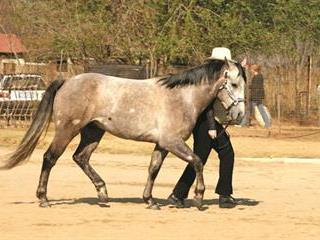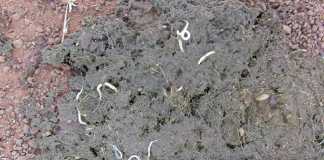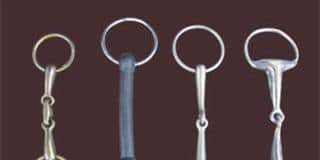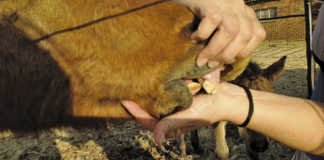
Groundwork is the period spent training a horse before a rider climbs onto its back; this differs according to discipline. Western horses and racehorses are backed at the age of two; warmbloods used for dressage and jumping are generally backed between three and four years.
Trainers of warmbloods believe that horses should be left out in the pasture with other horses until their joints, muscles and bones are strong enough to carry a rider. A warmblood or Friesian foal is trained to lead, stay calm and obedient when groomed or handled or when worked on by a farrier and vet, and be easy to load by the time it’s a yearling.
Groundwork can start at birth and continue intermittently until the horse is about three-and-a-half or even four years old. All the young horses are run in a herd and learn to interact with each other. Serious training begins only after the horse is sold. The young horse is kept on its own in a stable and lunged for about 40 minutes once or twice a day.
Trainers take lunging seriously and the exercises are progressive, with systematic introduction of a bit and bridle and eventually a saddle.
It usually takes three to six weeks before the rider mounts the horse. If the warmblood is to be used as a jumper, free jumping on the lunge is incorporated in the training to balance the young horse over jumps before it is ridden. Thoroughbred foals in South Africa are usually brought up in large herds and weaned at the same time.
Shortly after weaning, foals are trained to be led, tied up in a stable for grooming, and permit handling by a farrier, horse dentist or vet.
Groundwork becomes highly focused three weeks before the yearling sales. Lunging and backing are completed by registered racing trainers after the yearling sales. There is no further groundwork after this. Thoroughbreds are ready to race by the time they are two, having been ridden by work riders and jockeys for increasing periods once or twice a day.
By contrast, Western horses are subjected to a wide variety and duration of groundwork. The bronco-busting school of thought still exists. Two- or three-year-old horses, brought up in herds on farms, are rounded up and herded into a pen. They are roped and choked. A saddle is thrown on and a brave young cowboy jumps on and rides the horse with no groundwork at all.
The middle road is the round pen ‘join-up’ method described by Monty Roberts. This can result in the trainer getting onto the horse and riding it within about an hour. However, with both approaches, the lack of groundwork makes the horse difficult to manage. It has not learnt to be led on a halter, pick up its feet to be cleaned, or even to be caught when it’s in a group, unless the handler uses a lasso.
‘Natural horsemanship’ has filled this gap. There are many practitioners, from Stacey Westfall to Clint Anderson and Pat Pirelli. All spend several months doing groundwork, desensitising and training the horse over obstacles. This period can be shortened considerably, as shown by Westfall, who condensed the groundwork into two days during the Road to the Horse competition in the US in 2006.
Notwithstanding, it is better to do groundwork for two to three weeks. Natural horsemanship groundwork sometimes goes on too long, resulting in horses that are very obedient in hand but almost impossible to ride.
Dr Mac is an academic, a practising equine veterinarian and a stud owner.













